
(a)
Interpretation:
The symmetry elements and point group of staggered
Concept introduction:
A symmetry operation is defined as an action on an object to reproduce an arrangement that is identical to its original spatial arrangement. The spatial arrangement of the object remains identical after a symmetry operation. The point of reference through which a symmetry operation takes place is termed as a symmetry element.
(a)
Answer to Problem 10A.1P
The symmetry elements of staggered
The staggered
Explanation of Solution
The staggered form of ethane
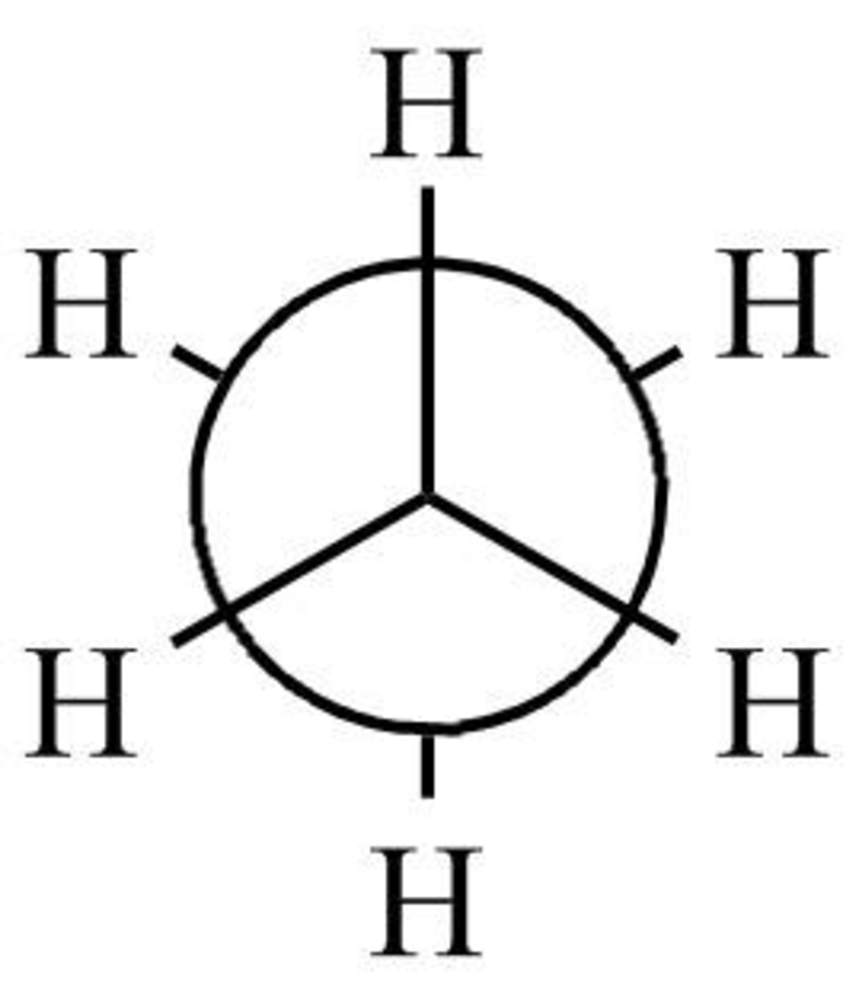
Figure 1
The staggered
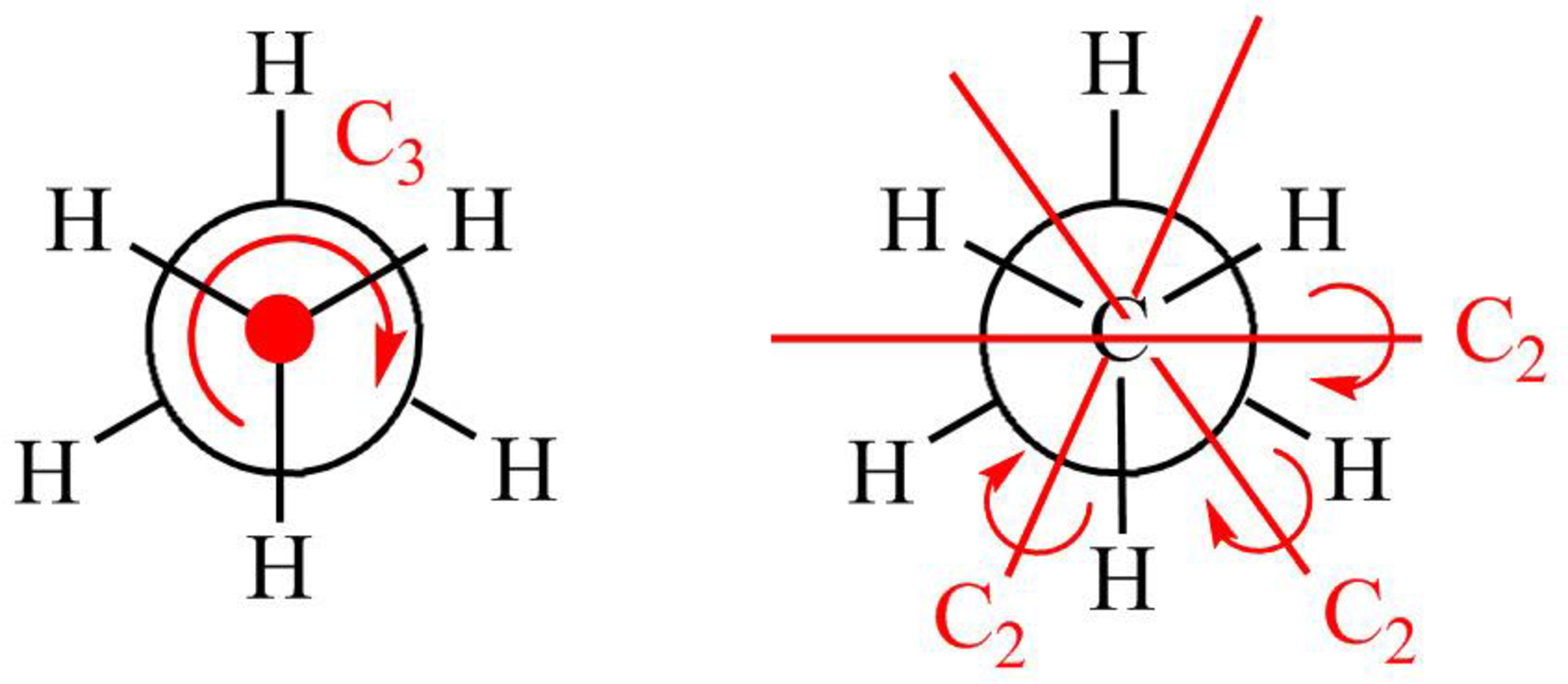
Figure 2
The symmetry elements of staggered
The molecules which have point group
The molecules which do not have any reflective symmetry elements (plane) but may have rotational axis are said to be as a chiral molecule. The staggered
(b)
Interpretation:
The symmetry elements and point group of chair and boat cyclohexane have to be stated. Whether the molecule is polar or not has to be stated. Whether the molecule is chiral or not has to be stated
Concept introduction:
As mentioned in the concept introduction in part (a).
(b)
Answer to Problem 10A.1P
The symmetry elements of the chair form of cyclohexane are
The chair form of cyclohexane molecule is nonpolar and achiral.
The symmetry elements of the boat form of cyclohexane are
The boat form of cyclohexane molecule is polar and achiral.
Explanation of Solution
The structure of the chair form of cyclohexane is shown below in Figure 3.
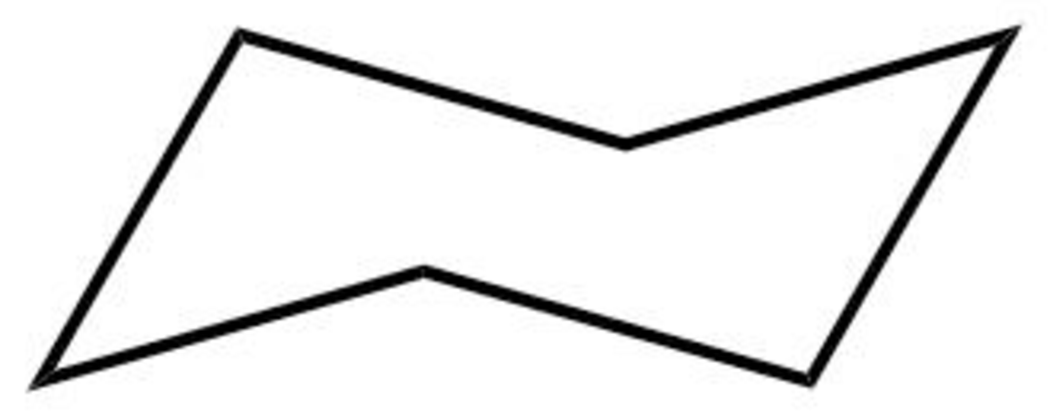
Figure 3
The chair form of cyclohexane has a principal axis
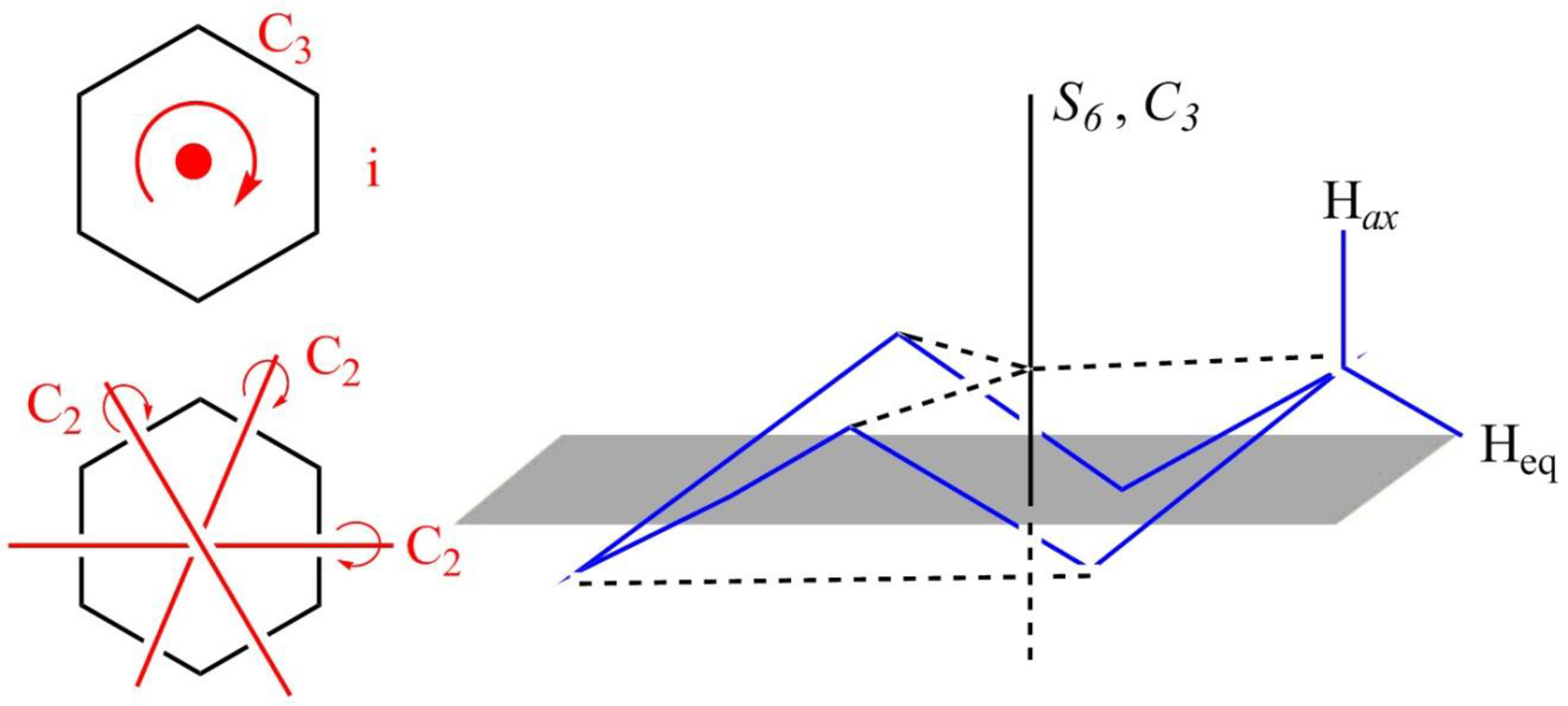
Figure 4
The symmetry elements of the chair form of cyclohexane are
The molecules which have point group
The molecules which do not have any reflective symmetry elements (palne) but may have rotational axis are said to be as a chiral molecule. The chair form of cyclohexane has three
The structure of the boat form of cyclohexane is shown below in Figure 5.
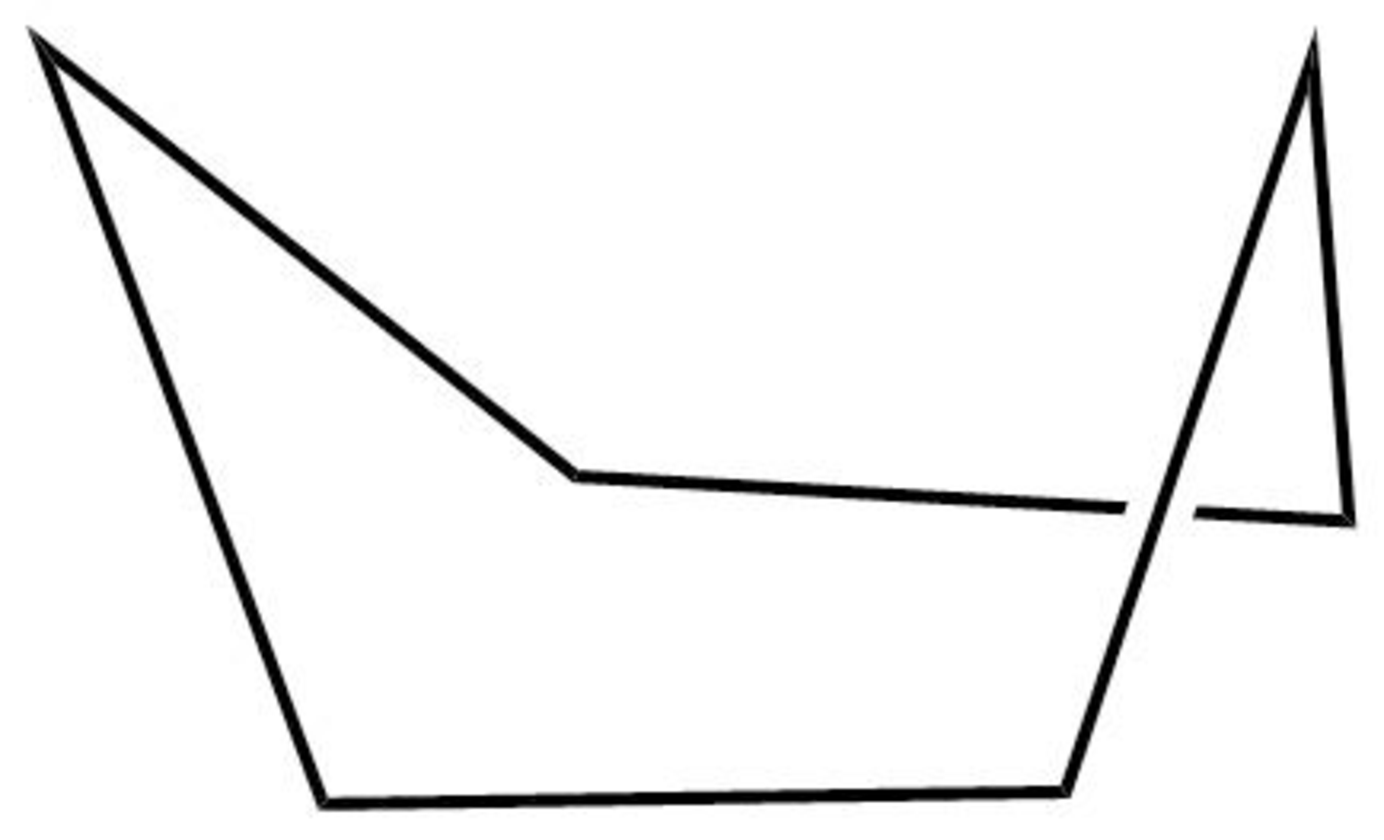
Figure 5
The boat form of cyclohexane has a rotation axis
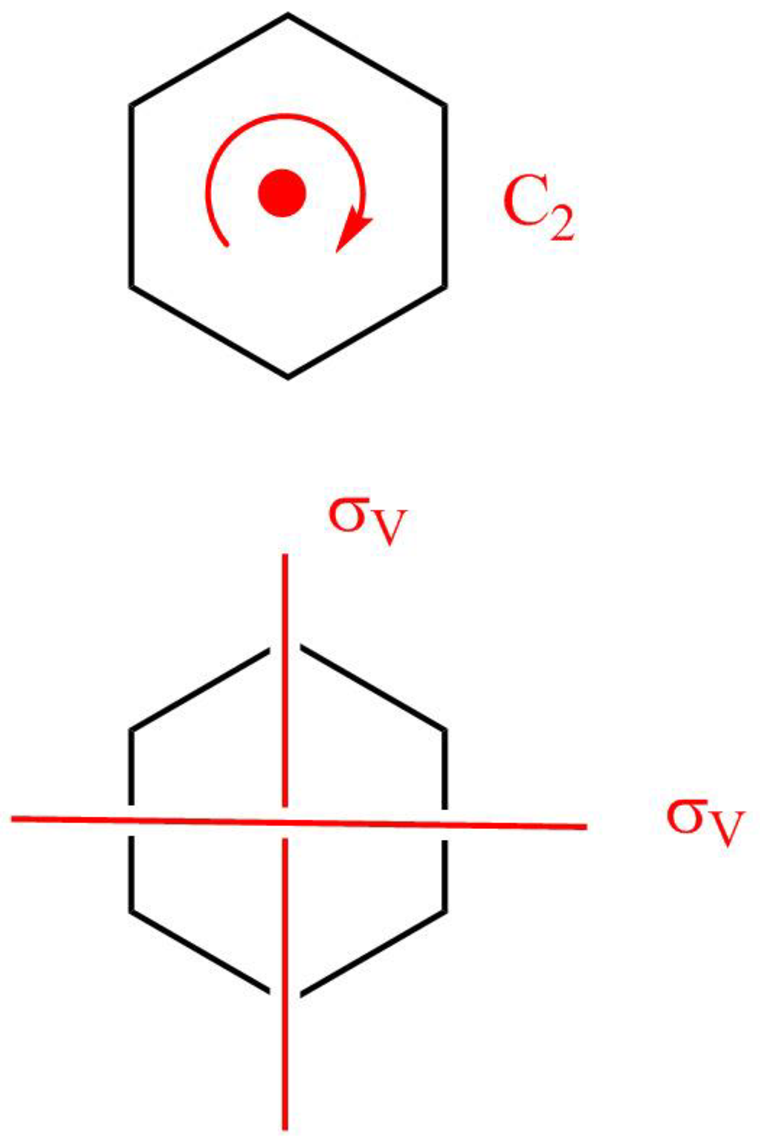
Figure 6
The symmetry elements of the boat form of cyclohexane are
The molecules which have point group
The molecules which do not have any reflective symmetry elements (plane) but may have rotational axis are said to be as a chiral molecule. The boat form of cyclohexane has two
(c)
Interpretation:
The symmetry elements and point group of diborane
Concept introduction:
As mentioned in the concept introduction in part (a).
(c)
Answer to Problem 10A.1P
The symmetry elements of diborane
The diborane
Explanation of Solution
The structure of diborane is shown below in Figure 7.
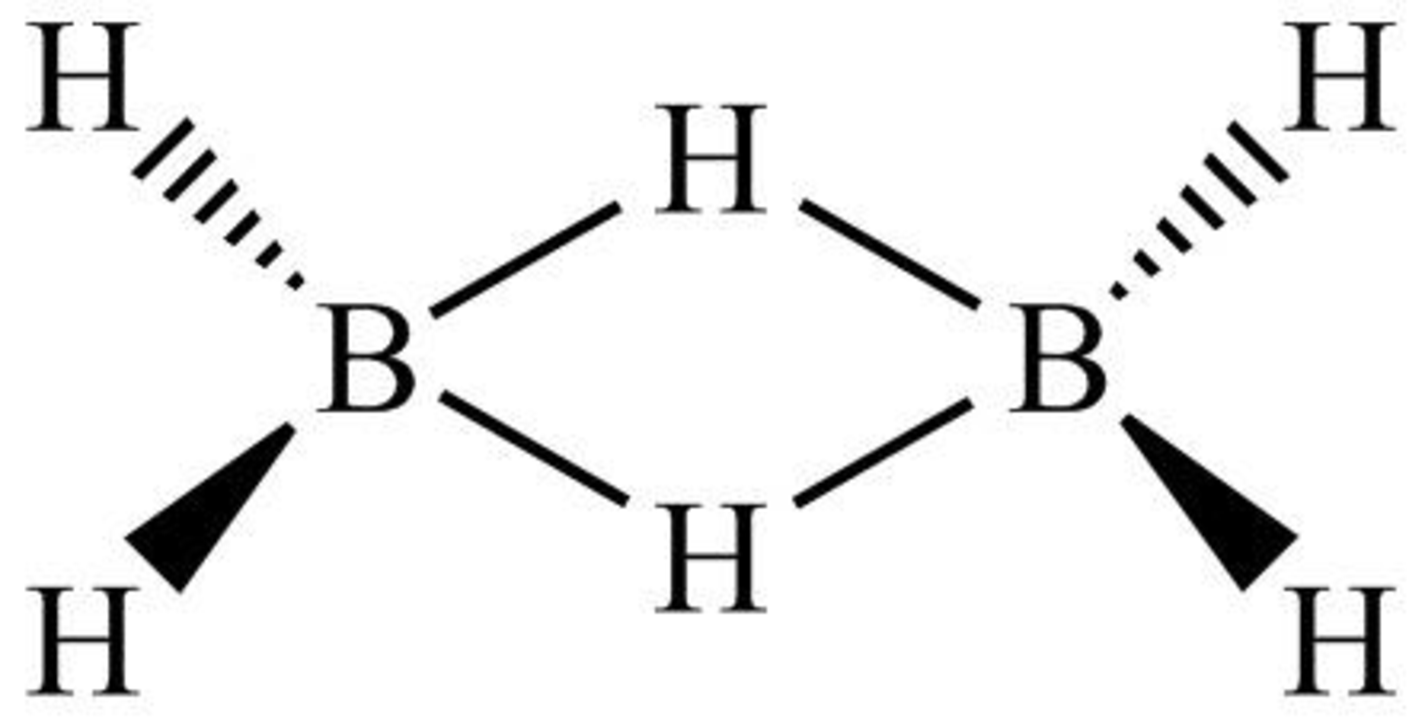
Figure 7
Diborane
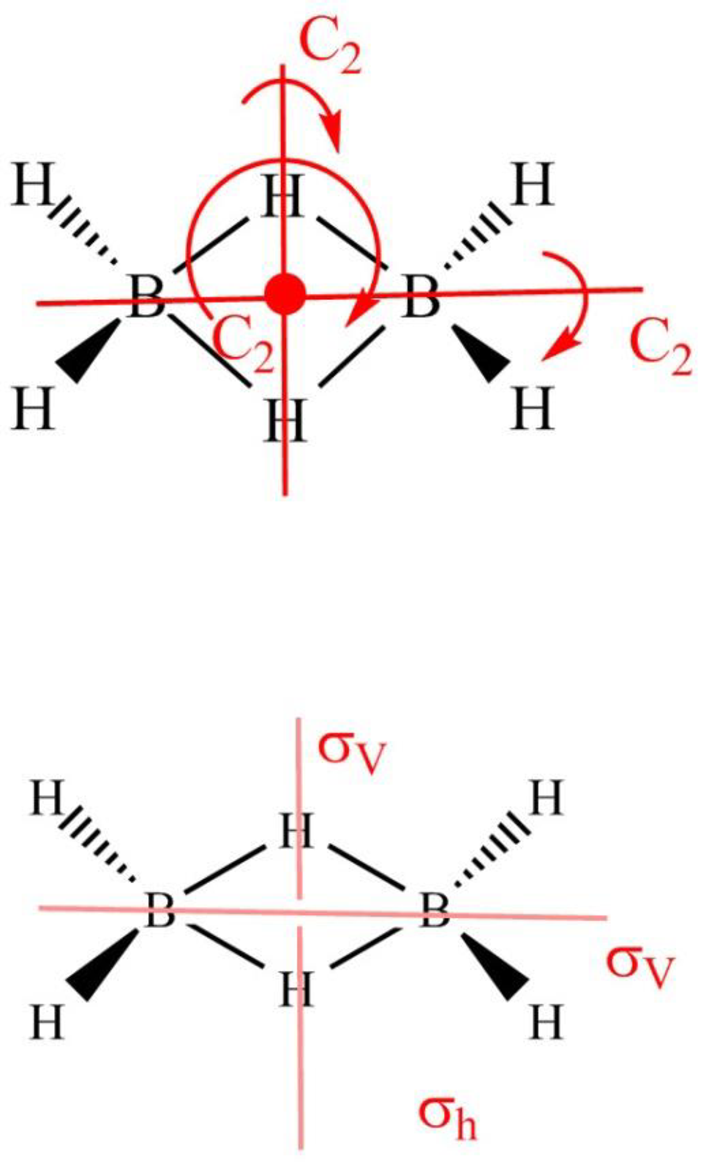
Figure 8
The symmetry elements of diborane
The molecules which have point group
The molecules which do not have any reflective symmetry elements (plane) but may have rotational axis are said to be as a chiral molecule. The diborane
(d)
Interpretation:
The symmetry elements and point group of
Concept introduction:
As mentioned in the concept introduction in part (a).
(d)
Answer to Problem 10A.1P
The symmetry elements of
The
Explanation of Solution
The structure of
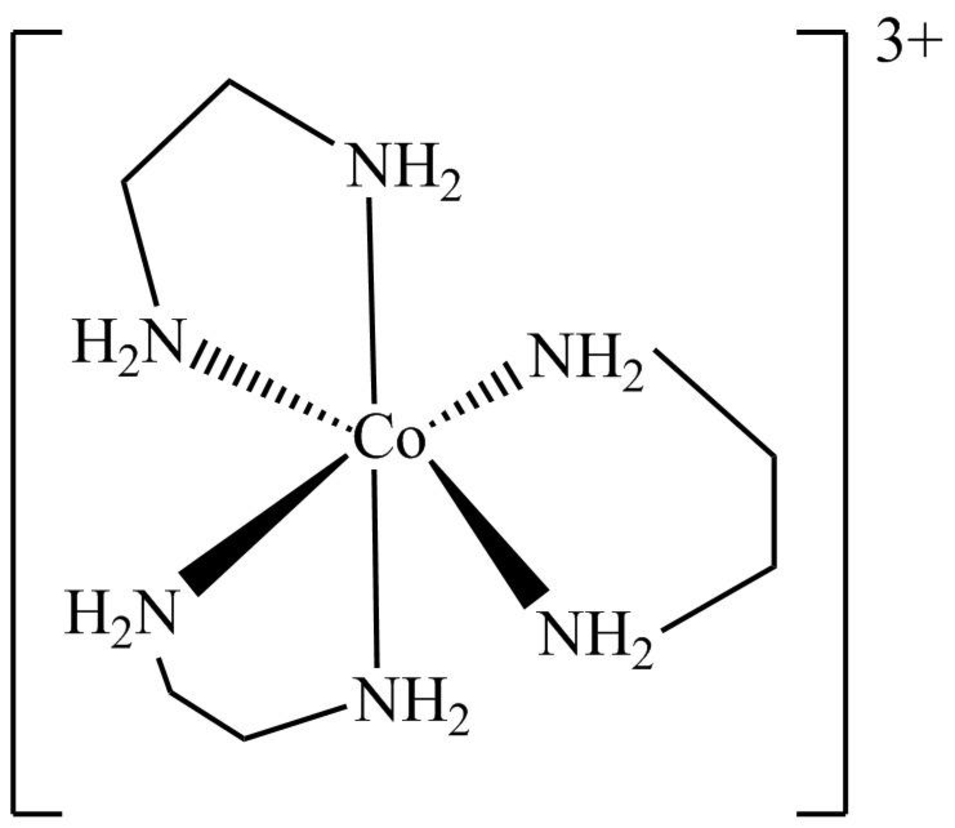
Figure 9
The
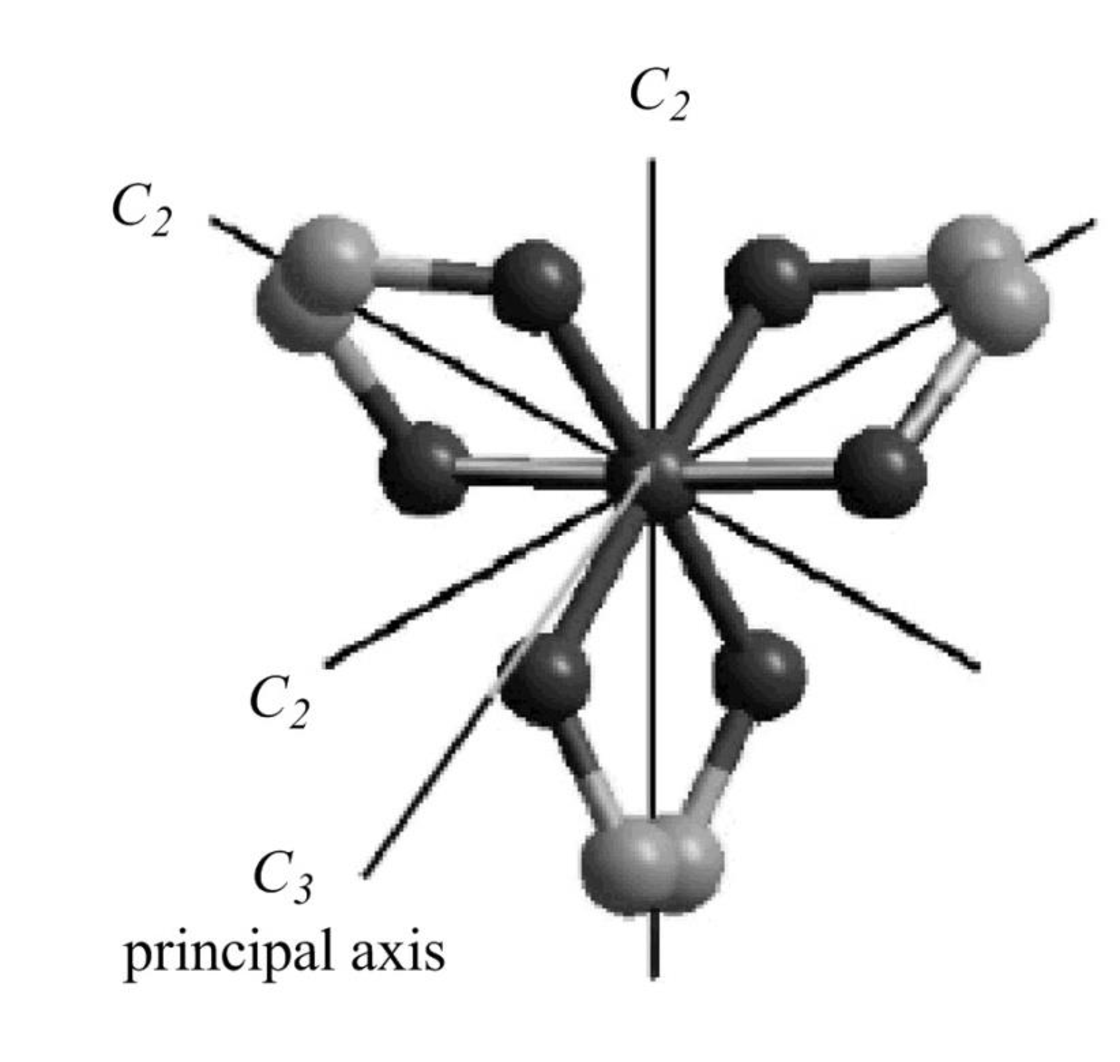
Figure 10
The symmetry elements of
The molecules which have point group
The molecules which do not have any reflective symmetry elements (plane) but may have rotational axis are said to be as a chiral molecule. The
(e)
Interpretation:
The symmetry elements and point group of crown-shaped
Concept introduction:
As mentioned in the concept introduction in part (a).
(e)
Answer to Problem 10A.1P
The symmetry elements of crown-shaped
The crown-shaped
Explanation of Solution
The structure of the crown-shaped
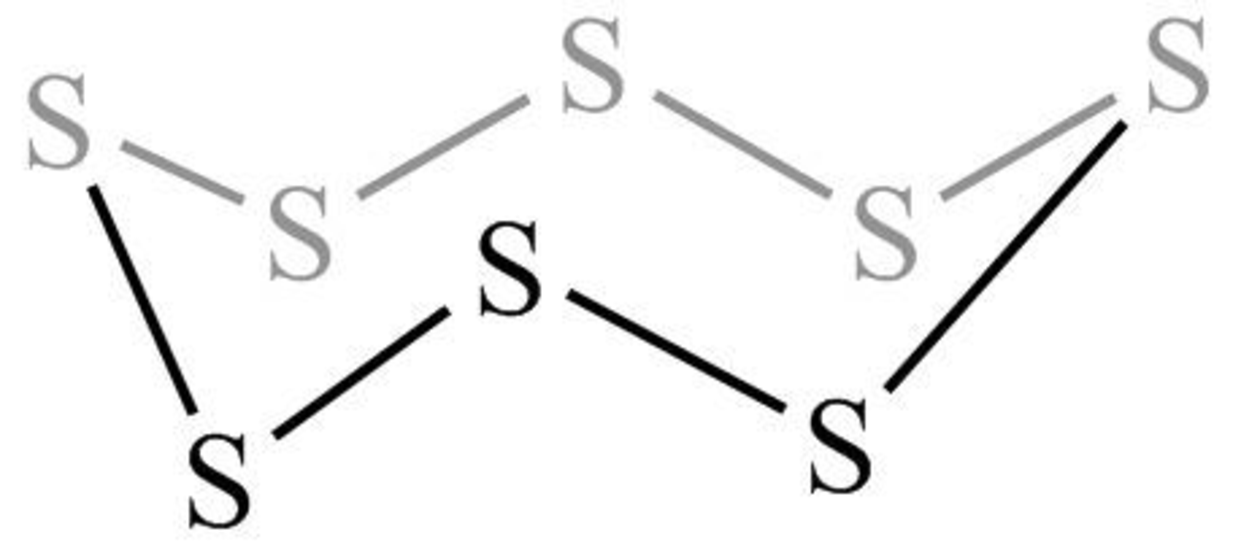
Figure 11
The crown-shaped
The symmetry elements of crown-shaped
The molecules which have point group
The molecules which do not have any reflective symmetry elements (plane) but may have rotational axis are said to be as a chiral molecule. The crown-shaped
Want to see more full solutions like this?
Chapter 10 Solutions
PHYSICAL CHEMISTRY. VOL.1+2 (LL)(11TH)
- Determine the structures of the missing organic molecules in the following reaction: H+ O OH H+ + H₂O ☑ ☑ Note: Molecules that share the same letter have the exact same structure. In the drawing area below, draw the skeletal ("line") structure of the missing organic molecule X. Molecule X shows up in multiple steps, but you only have to draw its structure once. Click and drag to start drawing a structure. X § ©arrow_forwardTable 1.1 Stock Standard Solutions Preparation. The amounts shown should be dissolved in 100 mL. Millipore water. Calculate the corresponding anion concentrations based on the actual weights of the reagents. Anion Amount of reagent (g) Anion Concentration (mg/L) 0.1649 Reagent Chloride NaCl Fluoride NaF 0.2210 Bromide NaBr 0.1288 Nitrate NaNO3 0.1371 Nitrite NaNO2 0.1500 Phosphate KH2PO4 0.1433 Sulfate K2SO4 0.1814arrow_forwardDraw the structure of the pound in the provided CO as a 300-1200 37(2), 11 ( 110, and 2.5 (20arrow_forward
- Please help me with # 4 and 5. Thanks in advance!arrow_forwardA small artisanal cheesemaker is testing the acidity of their milk before it coagulates. During fermentation, bacteria produce lactic acid (K₁ = 1.4 x 104), a weak acid that helps to curdle the milk and develop flavor. The cheesemaker has measured that the developing mixture contains lactic acid at an initial concentration of 0.025 M. Your task is to calculate the pH of this mixture and determine whether it meets the required acidity for proper cheese development. To achieve the best flavor, texture and reduce/control microbial growth, the pH range needs to be between pH 4.6 and 5.0. Assumptions: Lactic acid is a monoprotic acid H H :0:0: H-C-C H :0: O-H Figure 1: Lewis Structure for Lactic Acid For simplicity, you can use the generic formula HA to represent the acid You can assume lactic acid dissociation is in water as milk is mostly water. Temperature is 25°C 1. Write the K, expression for the dissociation of lactic acid in the space provided. Do not forget to include state symbols.…arrow_forwardCurved arrows are used to illustrate the flow of electrons. Using the provided starting and product structures, draw the curved electron-pushing arrows for the following reaction or mechanistic step(s). Be sure to account for all bond-breaking and bond-making steps. :0: :0 H. 0:0 :0: :6: S: :0: Select to Edit Arrows ::0 Select to Edit Arrows H :0: H :CI: Rotation Select to Edit Arrows H. < :0: :0: :0: S:arrow_forward
- 3:48 PM Fri Apr 4 K Problem 4 of 10 Submit Curved arrows are used to illustrate the flow of electrons. Using the provided starting and product structures, draw the curved electron-pushing arrows for the following reaction or mechanistic step(s). Be sure to account for all bond-breaking and bond-making steps. Mg. :0: Select to Add Arrows :0: :Br: Mg :0: :0: Select to Add Arrows Mg. Br: :0: 0:0- Br -190 H 0:0 Select to Add Arrows Select to Add Arrows neutralizing workup H CH3arrow_forwardIarrow_forwardDraw the Markovnikov product of the hydrobromination of this alkene. Note for advanced students: draw only one product, and don't worry about showing any stereochemistry. Drawing dash and wedge bonds has been disabled for this problem. + Explanation Check 1 X E 4 1 1 1 1 1 HBr Click and drag to start drawing a structure. 80 LE #3 @ 2 $4 0 I அ2 % 85 F * K M ? BH 2025 McGraw Hill LLC. All Rights Reserved. Terms of Use Privacy Center & 6 27 FG F10 8 9 R T Y U D F G H P J K L Z X C V B N M Q W A S H option command H command optiarrow_forward
- Be sure to use wedge and dash bonds to show the stereochemistry of the products when it's important, for example to distinguish between two different major products. Predict the major products of the following reaction. Explanation Q F1 A Check F2 @ 2 # 3 + X 80 F3 W E S D $ 4 I O H. H₂ 2 R Pt % 05 LL ee F6 F5 T <6 G Click and drag to start drawing a structure. 27 & A 2025 McGraw Hill LLC. All Rights Reserved. Terms of Use Privacy Center Acce Y U H DII 8 9 F10 4 J K L Z X C V B N M T H option command F11 P H commandarrow_forwardCurved arrows are used to illustrate the flow of electrons. Use the reaction conditions provided and follow the arrows to draw the intermediate and product in this reaction or mechanistic step(s). Include all lone pairs and charges as appropriate. Ignore stereochemistry. Ignore inorganic byproducts. H :0: CH3 O: OH Q CH3OH2+ Draw Intermediate protonation CH3OH CH3OH nucleophilic addition H Draw Intermediate deprotonation :0: H3C CH3OH2* protonation H 0: H CH3 H.arrow_forwardPredicting the reactants or products of hemiacetal and acetal formation uentify the missing organic reactants in the following reaction: H+ X+Y OH H+ за Note: This chemical equation only focuses on the important organic molecules in the reaction. Additional inorganic or small-molecule reactants or products (like H2O) are not shown. In the drawing area below, draw the skeletal ("line") structures of the missing organic reactants X and Y. You may draw the structures in any arrangement that you like, so long as they aren't touching. Explanation Check Click and drag to start drawing a structure. ? olo 18 Ar © 2025 McGraw Hill LLC. All Rights Reserved. Terms of Use | Privacy Center | Accessibilityarrow_forward
 ChemistryChemistryISBN:9781305957404Author:Steven S. Zumdahl, Susan A. Zumdahl, Donald J. DeCostePublisher:Cengage Learning
ChemistryChemistryISBN:9781305957404Author:Steven S. Zumdahl, Susan A. Zumdahl, Donald J. DeCostePublisher:Cengage Learning ChemistryChemistryISBN:9781259911156Author:Raymond Chang Dr., Jason Overby ProfessorPublisher:McGraw-Hill Education
ChemistryChemistryISBN:9781259911156Author:Raymond Chang Dr., Jason Overby ProfessorPublisher:McGraw-Hill Education Principles of Instrumental AnalysisChemistryISBN:9781305577213Author:Douglas A. Skoog, F. James Holler, Stanley R. CrouchPublisher:Cengage Learning
Principles of Instrumental AnalysisChemistryISBN:9781305577213Author:Douglas A. Skoog, F. James Holler, Stanley R. CrouchPublisher:Cengage Learning Organic ChemistryChemistryISBN:9780078021558Author:Janice Gorzynski Smith Dr.Publisher:McGraw-Hill Education
Organic ChemistryChemistryISBN:9780078021558Author:Janice Gorzynski Smith Dr.Publisher:McGraw-Hill Education Chemistry: Principles and ReactionsChemistryISBN:9781305079373Author:William L. Masterton, Cecile N. HurleyPublisher:Cengage Learning
Chemistry: Principles and ReactionsChemistryISBN:9781305079373Author:William L. Masterton, Cecile N. HurleyPublisher:Cengage Learning Elementary Principles of Chemical Processes, Bind...ChemistryISBN:9781118431221Author:Richard M. Felder, Ronald W. Rousseau, Lisa G. BullardPublisher:WILEY
Elementary Principles of Chemical Processes, Bind...ChemistryISBN:9781118431221Author:Richard M. Felder, Ronald W. Rousseau, Lisa G. BullardPublisher:WILEY





